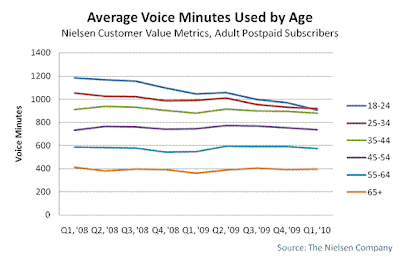Is the investment case for fiber to the home networks getting more challenging? Yes, says Rupert Wood, Analysys Mason principal analyst. A shift of revenue, attention and innovation to wireless networks is part of the reason. But the core business case for triple-play services also is becoming more challenging as well.
All of that suggests service providers will have to look outside the traditional end-user services area for sustainable growth. Many believe that will have to come in the form of services provided to business partners who can use network-provided information to support their own commerce and marketing efforts. Those partners might be application developers, content sites, ad networks, ad aggregators or other entities that can partner with service providers to add value to their existing business operations.
Current location, type of device, billing capabilities, payment systems, application programming interfaces and communication services, storage services, profile and presence information might be valuable in that regard.
Fiber to the home long has been touted by many as the "best," most "future proof" medium for fixed access networks, at least of the telco variety. But not by all. Investment analysts, virtually all cable and many telco excutives also have argued that "fiber to the home" costs too much.
Over the last decade or so, though, something new has happened. Innovation, access, usage and growth have shifted to wireless networks. None of that is helpful for the FTTH business case. That is not to say broadband access is anything but the foundation service of the future for a fixed-network service providers. Fixed networks in all likelihood always will provide orders of magnitude more usable bandwith than wireless networks.
The issue, though, is the cost of building new fiber networks, balanced against the expected financial returns.
“FTTH is often said to be ‘future-proof’, but the future appears to have veered off in a different direction,” says Rupert Wood, Analysys Mason principal analyst. Regulatory uncertainty, the state of capital markets and executive decisions play a part in shaping the pace of fiber deployment. But saturation of end user demand now is becoming an issue as well.
The basic financial problems include competition from other contestants, which lowers the maximum penetration an operator can expect. FTTH has to be deployed, per location. But services will be sold to only some percentage of those locations. There is a stranded investment problem, in other words.
The other issue is that the triple-play services bundle is itself unstable. FTTH networks are not required to provide legacy voice services. In fact, the existing networks work fine for that purpose. One can argue that broadband is needed to provide the next generation of voice (VoIP or IP telephony), but demand for fixed-line voice has been dropping for a decade. So far, there is scant evidence that VoIP services offered in place of legacy voice have raised average revenue per user. Most observers would note the trend goes the other way: in the direction of lower prices.
And though entertainment video services offer a clear chance for telcos to gain market share at the expense of cable operators, there is at least some evidence that overall growth is stalling, limiting gains to market share wins.
Broadband access also is nearing saturation, though operators are offering higher-priced new tiers of service that could affect ARPU at some point. So the issue is that the business case for FTTH has to be carried by a declining service (voice), a possibly-mature service (video) and a nearly-mature service (broadband access).
And then there is wireless substitution. Fixed-line voice already is being cannibalized by mobile voice. Some observers now expect the same thing to start happening in broadband access, and many note new forms of video could displace some amount of entertainment video spending as well.
The fundamental contradiction is that continued investment in fixed-line networks, which is necessary over time, occurs in a context of essentially zero growth.
Atlantic-ACM, for example, now forecasts that U.S. wireline network revenue, overall, between now and 2015, will be flat at best. Compound annual growth rates, in fact, are forecast to be slightly negative, at about 0.3 percent. Where total industry revenue was about $345 billion in 2009. By 2015, revenue will be $337 billion, Atlantic-ACM predicts.
That is not to argue against replacement of aging networks; in fact that is a necessary and normal part of any network deployment. The issue is the declining amount of revenue any such network can generate.
"Overall consumer spend on telecoms has long since ceased to grow in developed economies," says Wood.
And though FTTH promises dramatically-higher bandwidth, demand is a bit uncertain at the moment. "Even though many cable operators have been offering superfast fixed broadband connectivity for some time in Europe and North America, take-up of such services remains troublingly low."
Aside from some early adopters, Wood argues, new services that uniquely take advantage of FTTH are needed. Industry executives are aware of that need, and have been for quite some time.
The issue is that the scale and pace of innovation in wireless now outstrips what is happening on the fixed line network. That makes the revenue upside for FTTH a tougher challenge. In some markets, cheaper copper-based alternatives might continue to make more sense, Wood argues.
That is particularly true in Europe, says Wood, where consumer willingness to pay a premium for additional bandwidth is low and where broadband prices are already significantly lower than in North America.
"This level of commitment to FTTH looks unsustainable and fundamentally unreasonable, especially when VDSL networks will pass far more households," says Wood. "We therefore expect telcos that have opted for FTTH roll-out beyond proof-of-concept trials and greenfield sites to back away from further commitment and, in some cases, reduce the scale of their FTTH roll-out plans."
So the strategic issue now would seem to be whether continued FTTH momentum can be sustained. It would be an unexpected turn of events, if it turns out Wood is correct.































